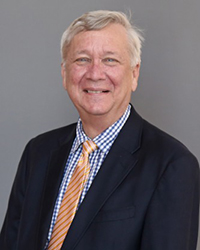
Brown University School of Engineering faculty were awarded a combined $2.5 million of grant funding from the U.S. Army Corps of Engineers to study the remediation of per- and polyfluoroalkyl substances (PFAS), commonly known as forever chemicals. The funding will be distributed in two grants over four years. Associate Professor Franklin Goldsmith will serve as the principal investigator on one grant with co-PIs Professor Kurt Pennell and Professor Eric Suuberg. They will study an “Experimental and Theoretical Validation of the Chemical Kinetics for the Thermal Destruction of Perfluoroalkyl Alkyl Substances.” Pennell will serve as the principal investigator (PI) on the other grant with co-PIs Professor Linda Abriola and Dr. Rula Deeb of Geosyntec Consultants, Inc., and they will investigate an “Experimental Evaluation and Mathematical Modeling of Particulate Amendment Delivery, Retention and Adsorption Performance in the Subsurface.”

The U.S. Environmental Protection Agency recently issued sub part per trillion (ppt) drinking water health advisories for four common PFAS, perfluorooctanoic acid (PFOA) and perfluorooctane sulfonic acid (PFOS), perfluorobutane sulfonic acid (PFBS) and GenX, and thus removal of PFAS from contaminated soil and groundwater is now a critical issue for the Department of Defense (DoD). When drinking water is treated to remove PFAS, usually by adsorption onto granular activated carbon (GAC), the problem arises of how to dispose of PFAS-contaminated GAC. The most successful and widely used approach is incineration. However, the exact chemistry that occurs during the incineration of PFAS remains poorly understood.

Goldsmith and his team aim to provide a detailed understanding of the governing processes in the thermal destruction of PFAS, including (i) determination of the key decomposition reactions and their products, and (ii) identification of the rate determining steps in the degradation process. This should allow for a clearer understanding of where the key steps in destruction take place, when dealing with the adsorbents used to remove PFAS from water and waste streams.
“These new insights into PFAS reaction chemistry will facilitate the translation of laboratory results to field-applicable tools - such as computational models that will provide science-based guidance for temperature, residence time, and oxidizer concentration to yield a desired PFAS conversion for a given set of operational conditions,” said Goldsmith.

Remediation of soils and groundwater impacted by PFAS is particularly challenging due to the strength of the carbon-fluorine bond and the need to achieve extremely low drinking water levels. Currently, PFAS-impacted groundwater is often managed using conventional pump and treat remediation approaches that rely on extraction and above-ground treatment. Recently, an alternative in situ approach has been proposed in which particulate amendments, including powdered activated carbon (PAC) and ion exchange resins are introduced into the subsurface to create an in situ reactive zone or barrier that is designed to adsorb and retain PFAS. Although injectable particulate amendments hold promise for in situ treatment of PFAS-impacted soils and groundwater, published data are scarce and insufficient to assess adsorption capacity, support remedial design, or evaluate long-term amendment performance under realistic conditions.
“We hope to advance the fundamental understanding of the delivery, retention and adsorption performance of particulate amendments in subsurface systems impacted by PFAS,” said Pennell.